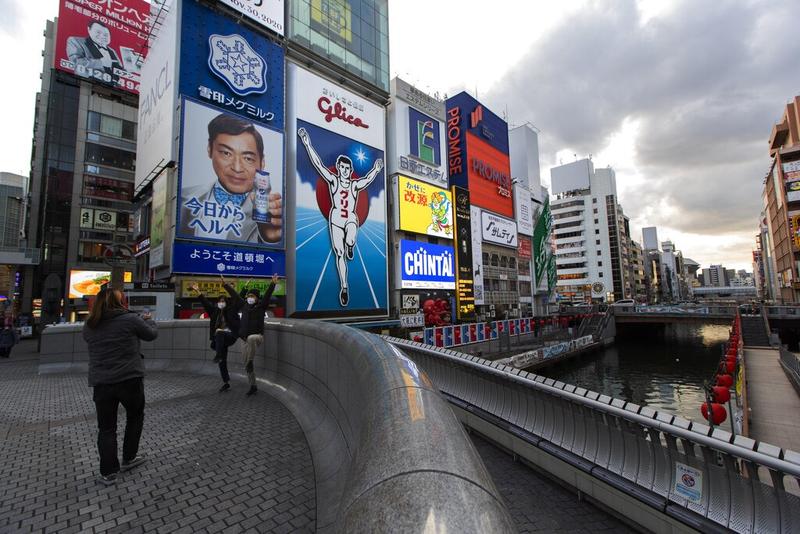 People mimic the character in the advertisement while posing for photos on the Ebisu-bashi bridge, a popular tourist spot in Osaka, western Japan, on Nov 30, 2020. (AHIRO KOMAE / AP)
People mimic the character in the advertisement while posing for photos on the Ebisu-bashi bridge, a popular tourist spot in Osaka, western Japan, on Nov 30, 2020. (AHIRO KOMAE / AP)
TOKYO - The Japanese government plans to keep setting aside money to promote domestic tourism and dining out in its next stimulus package, according to a draft of the upcoming package seen by Reuters, even as rising COVID-19 infections have prompted concern about the campaigns.
The outline underscores PM Suga’s resolve to keep businesses open even as Japan faces a resurgence in coronavirus infections
The draft stimulus package also included a plan to set up a fund to encourage investment in green technology.
ALSO READ: Suga vows stimulus focusing on green, digital innovation
The outline underscores Prime Minister Yoshihide Suga’s resolve to keep businesses open, even as Japan faces a resurgence in coronavirus infections that are quickly filling up hospital beds quickly.
The draft made no mention of the size of stimulus package or its source of funding, which will likely be finalized in the coming days.
Some ruling party lawmakers have called for a third extra budget of up to 30 trillion yen (US$290 billion) to fund the new package, which Suga instructed his cabinet to compile.
The stimulus plan would follow a combined US$2.2 trillion in two previous packages rolled out this year to cushion the economic blow from the pandemic.
READ MORE: Japan to halt domestic travel campaign in virus hotspots
The new package will include subsidies for municipal governments that compensate businesses meeting requests to close shops early to contain the pandemic, the draft showed.
READ MORE: Japan's ramen bars struggle to stay open as virus hammers small firms
The government will also aid research and development in programs that help achieve a carbon neutral society, according to the draft.
Japan has confirmed around 150,000 cases of virus infections with deaths at more than 2,100.
Japan's economy has been gradually recovering from its worst post-war slump caused by the coronavirus earlier this year. But it is likely to take years before the economy returns to pre-pandemic levels.


